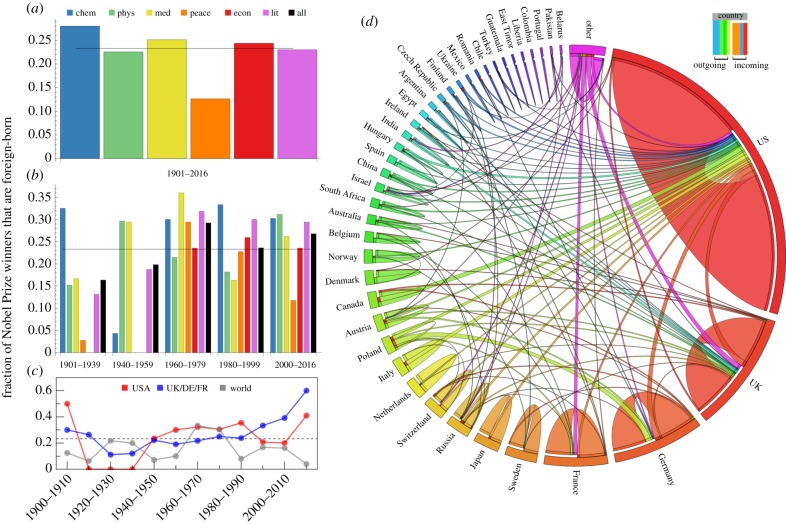Figure 1.
International mobility of Nobel laureates. (a) Fraction of Nobel Prize winners who received their award for work done in a country different than their birth country—‘foreign-born’; 23% of Nobel Prize winners from 1901 to 2016 belong to the foreign-born category, indicated by the horizontal line. (b) Fraction by award and time period. (c) Fraction by region of achievement over 10-year intervals. (d) The Nobelist birth-discovery network: countries are represented along the arc, with arc-length proportional to the number of laureates born in a given country. Link width represents the number of individuals born in country cb that performed award research in country ca. The link direction is denoted by the gap, which differentiates incoming and outgoing links: e.g. the majority of the international links associated with the US terminate with a gap, indicating foreign-born. The majority of links are intra-country (e.g. 29% of all laureates have the US as their country of birth and their country of achievement), but the international links represent the nearly 1 in 4 Nobelists who migrated internationally. Data from Wolfram Alpha [35]. (Online version in colour.)

